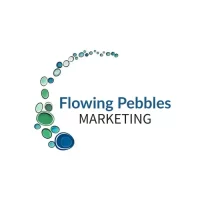The world of content marketing in 2025 is changing fast. It is more dynamic, data-driven, and human than ever. For small and mid-sized businesses, staying current with the state of content marketing isn’t just about keeping up. It’s about knowing where to focus, what to let go of, and how to use your content strategy to support growth.
When you understand where content marketing is headed, you can build authority, attract qualified leads, and nurture relationships. You can better compete with larger players in a crowded digital space.
Keeping pace may help you stay relevant. But the real opportunity lies in getting ahead by embracing the right trends, grounded in your strategy, as we move toward 2026.
From the growing influence of Artificial intelligence (AI) to a renewed emphasis on trust, personalization, and short-form video, the landscape is still evolving fast. Businesses are not only creating content in new ways, but they are also rethinking how to streamline workflows, connect with their audience, and turn insights into action.
So, if you are ready to cut through the noise and make smarter decisions with your content, let’s explore the most impactful trends shaping content marketing today and what they mean for your business.

Content Marketing Trends You Cannot Afford to Ignore
AI is Changing the Game
AI is no longer experimental. It has quickly become the backbone in many aspects of digital marketing. For content marketing, it’s revolutionizing everything from generating new ideas to changing the distribution landscape with automation.
Many businesses are using AI to create high-quality materials faster and repurpose content efficiently. They are using it to streamline workflows, personalize messaging, and scale content. But they still need oversight.
The opportunity for small businesses? Leverage AI to create faster, test smarter, and spend more time on strategy and creativity.
Trust and Authority Matter More Than Ever
In modern marketing, it is essential that small B2B businesses recognize how trust builds relationships and increases loyalty with their audience. While you might be tempted to copy and paste AI-generated content, be wary of sounding generic. People are skeptical of AI-generated content and crave credibility. They want human perspective, original insights, and proof you know what you’re talking about.
One of the most effective ways to earn trust is by establishing authority in your industry. This extends beyond using your brand voice by sharing real testimonials and customer stories. Think about ways to elevate your brand authority through media mentions, case studies, long-lasting evergreen content, and original research or proprietary data.
Even if you are a small business, you do not need a huge budget for research. Try simple surveys, customer interviews, or compile internal data into digestible insights. Use customer feedback and data to create infographics or mini-whitepapers.
Short-form Video Might Win Attention, But Strategy Wins Results
Video continues to dominate attention spans, and short-form video dominates. Short-form video that conveys value quickly and visually is the top performing format with the highest return on investment. With the right platforms and tactics, you can create engaging, concise, and easy to watch content that educates or entertains. The key is to understand what your audience is drawn to and what platforms they are already on.
Some popular ideas for video include product guides, behind-the-scenes looks, customer testimonials, and short educational tips. A great start is to repurpose existing content that has received good results, such as repurposing blog posts into short videos on platforms like YouTube Shorts, Instagram Reels, and TikTok. Make sure to choose platforms where your audience already spends time.
Understanding your audience’s preferences and attention spans is crucial. Remember that there is no one-size-fits-all answer to the ideal video length. Therefore, it is important to experiment with what works best to reach your company’s goals.
Content Distribution Now Outweighs Creation
Many companies all too often find out the hard way that content creation without a distribution plan is like hosting a webinar and forgetting to invite anyone. Small businesses often invest heavily in creating content but overlook how to get it seen. In today’s environment, content distribution is as critical as content creation.
Companies are improving their content distribution by getting clever with their strategies. As mentioned above, they are getting savvy by repurposing content across multiple channels, such as email, social media, and podcasts.
Think about how your own company can amplify reach. Look at multiple ways you can use content and promote it. Then create a mini distribution plan. Additionally, consider creative ways to leverage employee advocacy and collaborate with influencers or industry partners.
Community-Led Content Builds Real Connection
Community-led content (like user-generated posts, spotlights, or collaborations) can provide a goldmine for your company. It is important to build trust with your audience, and people trust people more than brands. This makes community-led content a powerful trend to tap into. Not only does it create a sense of ownership for those included, but it also drives organic amplification.
By using user-generated content (UGC), you can build relationships while also generating authentic, relevant content that your audience values. One way to get UGC is by creating articles or podcasts that spotlight customers or feature community members. If you are involved in industry roundtables or expert panels, find ways to share your involvement with the organization that is hosting the event.
Search Intent is Prioritized Over Keywords
There was a time not that long ago when using keywords was a lot simpler. People would do a Google search, find the result they were looking for, and go to the website with the result. People still have plenty of questions, but the way they get the solutions has changed with zero-click searches.
It is no longer about ranking. Search engines prioritize content that solves problems and is organized clearly. You must use it within context, with the intent of being understood. As an example, focus on how your content is helping your audience solve a problem. Create in-depth, helpful answers that guide them through the buyer journey.
Be open to new ways to help your audience search for related information by organizing content into clusters or by subcategories. Ideally, you want the flow of content to be increasingly helpful, so Google can use it to provide answers directly in the search results, without users needing to visit a website.
Smarter Workflows Mean Better Content
AI is useful for more than getting the content done. It is invaluable in managing workflows by automating tasks and processes for research, writing, and editing. It can also help you streamline the content lifecycle, enhance content creation, and provide intelligent insights. It allows content teams to focus on strategic initiatives and creative endeavors while improving digital interactions and experiences.
Strategy Is Not Optional
With so much information on the internet, it can be difficult to recognize what types of content drive the most conversion, which channels are working best for engagement, and where you are getting the best ROI. You cannot use your gut.
Smart content strategies are deeply informed by data. It is essential to use tools that help you analyze user behavior and optimize accordingly. In addition, having a basic dashboard that track metrics like content engagement, form submissions, and page conversions can help to guide future content.
2025 Will Reward Clarity, Consistency, and Connection
The content marketing landscape is more crowded than ever but that does not mean it is harder to stand out. The businesses that will win this year are not necessarily the loudest. They are the ones who communicate clearly, show up consistently, and connect deeply with the people they want to serve.
If you are ready to align your content strategy with your business goals and show up with more purpose, clarity, and confidence, let’s talk.



